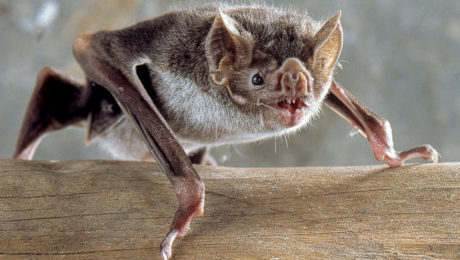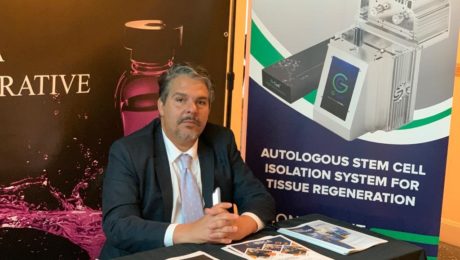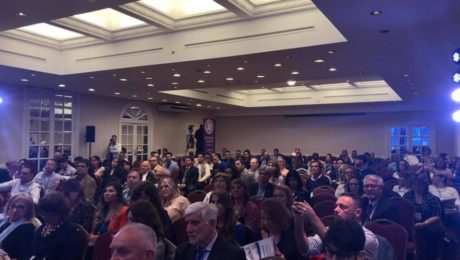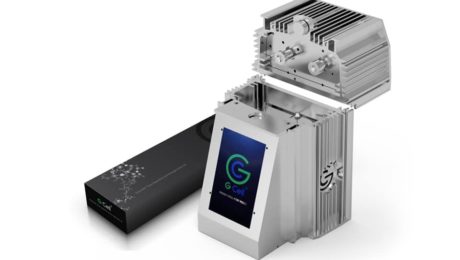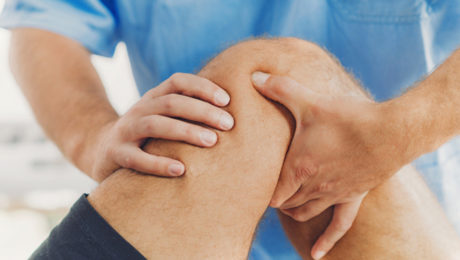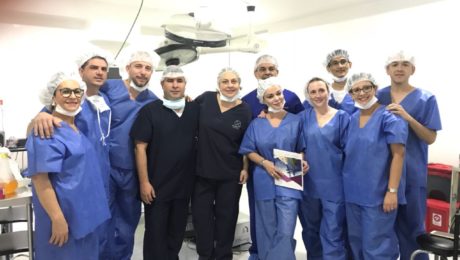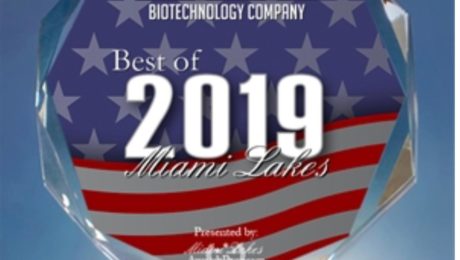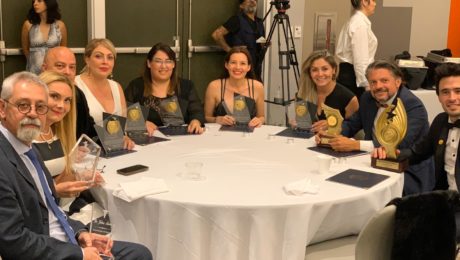Bats Carry Corona Virus. So Why Don't They Get Sick?
A lot of viruses that has taken a toll on life, the ebola virus in Africa, The Nipah virus of Nipah and the most recent one corona virus that left china running helter skelter all seemed to have originated from bats. During the course of the virus epidemic in Wuhan where it was first detected, some Chinese researchers in Wuhan examined some patients affected in that area and then took samples of the virus.
They did findings on the genetic sequence of the virus with other viruses that were known. The corona virus surprisingly had a 96% match with the horseshoe bats that are dominant in the southwest of china. The research findings were then published in a study on February, 2020.
A virologist Vineet Menachery from the university of Texas Medical Branch at Galveston though not affiliated to the study said “They’re too close in terms of their pure genetics to say they’re not related, or that they didn’t have a common ancestor.”
Menachery was a reputable virologist and had done other research works. He contributed to the theory that the spread of the corona virus must have been from these bats to humans. And possibly must have had another animal that served as an intermediary for the spread.
This same thing had happened with other forms of corona viruses as noted in the case of SARS (Severe Acute Respiratory Syndrome) an outbreak that took place in 2002-2003 where civets, a mongoose family member were infected with the bat corona virus and spread as humans bought them for food.
Another case was the MERS (Middle East Respiratory Syndrome) outbreak. This one happened in 2012 and was as a result of infected camels from the virus. People who ate undercooked meat of camels and as well drank the raw milk of camels were all affected.
So why is it that there are so many diseases that are spread from bats?
Its no doubt, bats have a lot of viruses that they carry with them. And these viruses in their variety are spread and manifests its tolls on people. Scientist are not sure why this is the case as confirmed by Kevin Olival, a research vice president as EcoHealth Alliance, a non-profit organization based in the U.S. He went further to say that it may have something to do with the family of the viruses carried by the bats. So you know, there are over 130 different families of viruses that bats do carry around.
And then, most bats and humans do come in contact through several means. The millions of populations of bats are ubiquitous to all the continents apart from in antartica. Rebekah of Colorado State university who researched infectious pathogens said “There’s a lot of viruses we’re finding in bats because there’s a lot of bats out there.”
They move about in multitudes and live in colonies of large populations. Some these members live in caves and share caves and trees where there can be a contact between humans and bats. Hence, these viruses can spread from these bats to humans.
Despite their sizes, bats have relatively long lifespans and can live over 30 years.”So there’s a long time for them to be persistently infected with the virus and shed it into the environment,” Kading says. The mode of mechanisms for these viruses are through urine, saliva and feces of bats. The outbreak of Nivah that happened in Bangladesh was linked to the sap of a date palm gotten from some trees that some bats licked and had infested with their urine.
Reading through all these, it is not absurd to wonder why the bats themselves do not get affected by the viruses they carry.
The answer to that question is based on the fact that the bat is the only flying mammal in the world. Their body metabolism and process quite differ from that of normal mammals too. When bats fly, their heart rates rise to about a thousand beats per minute with a temperature rise of about 100 degrees Fahrenheit. Linfa Wang a student of bat viruses at Duke-NUS Medical School in Singapore says that when these signs manifest in other mammals, they are signals that can trigger death. But this is not the same case for other bats. This is a lifestyle for them, every day.
Their system is also capable of producing molecules that other organisms do not have. The molecules carry out repair functions and prevent cell damage. This makes their system a bit irresistible to infections and also make them recalcitrant to viruses and resilient to diseases such as diabetes, cancer and other health conditions.
This is a prove that the manifestation of viruses in mammals is not always as a result of the virus itself, but as a result of the body’s reaction to the presence of such a virus that makes us ill by triggering other chain reactions, as Wang explains.
Olival at EcoHealth explains that these bats have coevolved with these viruses and it is not totally their fault that we humans are infected and affected by these viruses. The actual problem is when the viruses move from their species to other species of mammals which is also fostered by human activity.
Naturally, it would be hard for most animals and mammals to cross paths. But Olivial says that the presence of some activities and availability of exchange platforms made available by humans can allow such interaction to occur. She gave an example using wildlife markets like the one in Wuhan, where a bat could be mixed up with a civet. Who later on come in contact with humans – eg. Butchers who do not observe proper hygiene and protection from animal blood.
“The way that we’re coming into contact with these animals, hunting, selling, and trading them is to a scale that really we haven’t seen before,” he says.
Investigative teams did some in-depth search and they discovered some traces of this virus in 22 stalls and in a garbage truck that was found at Huanan Seafood Market right there in Wuhan, a place known for booming trade for live animals. This discovery led to shutting down the market as it was tied to majority of the cases.
The intermediary animals to this viruses are still a mystery, but it is clear that some of these animals are prone to interact more with humans. This is why when they are infected, the likelihood for human infection is widened. These other infected animals can sneeze, urinate, be cooked as food or even owned as pets.
Bats are not just vectors for viruses, they play an important role in balancing the eco-system. They feed on insects and fruits and are active agents of pollination. In fact, Wang believes that since these bats have successfully coevolved with these viruses, there is every possibility that they can be the agents that can lead to the cure and provision of therapies for these viruses.
- Published in Corporate News / Blog
Mexico City Medical Congress to Showcase the Global Stem Cells Group’s Latest Innovations
The group is sponsoring the event, which will attract physicians from across the globe with an interest in longevity and anti-aging medicine
MIAMI LAKES, Florida— The Global Stem Cells Group (GSCG) is set to sponsor the XI Congreso Mundial de Medicina Antienvejecimiento y Longevidad (World Conference of Anti-Aging and Longevity Medicine) to be held in Mexico City, Mexico on February 16-18, 2020.
The medical congress is expected to attract over 450 physicians and researchers from across the world interested in anti-aging and longevity practices and medical innovations. Over 30 speakers are slated to share information with attendees on a wide range of topics on how to lead a long, healthy life and improve longevity.
The GSCG is set to share a number of its latest innovations with congress attendees, including its newly released GCell technology device. This cutting-edge tool utilizes micrograft technology to harness the natural and powerful restorative capabilities of adipose tissues. Because it is FDA compliant, the device allows physicians across the globe to continue practicing adult stem cells-based procedures.
Additional benefits of GCell technology include shorter treatment times, delivering in-office treatments in around 30 minutes with local anesthesia, as well as less fat collection compared to existing treatments (15 mL versus 50 mL). GCell technology holds exciting implications across a range of medical specialties, including orthopedics, dermatology, cosmetic gynecology, aesthetics, and hair loss.
In addition to its GCell technology, the GSCG will also feature its newest line of stem cells products derived from first-tissue exosomes. Cellgenic Flow Exosomes utilizes the latest science and research available in cellular therapies to deliver a non-surgical approach to creating regenerative responses in a broad range of treatments. The product utilizes exosomes, which replicate the signals given out by stem cells, versus actual stem cells. Exosomes play a pivotal role in cell-to-cell communication and are involved in a wide range of physiological processes. These particles transfer critical bioactive molecules such as proteins, mRNA, and miRNA between cells and regulate gene expression in recipient cells.
“The XI Congreso Mundial de Medicina Antienvejecimiento y Longevidad is one of the world’s premier events connecting physicians and researchers with today’s most innovative treatments and technologies utilizing regenerative medicine,” said Benito Novas, CEO of the GSCG. “As a worldwide leader in training, education, and innovative products in the field of regenerative medicine, the GSCG is pleased to sponsor this congress and share its exciting new portfolio of products with physicians from across the world.”
To learn more about the Global Stem Cells Group and all of the group’s latest news and innovations, visit http://www.stemcellsgroup.com/
- Published in Press Releases
Two Global Stem Cells Group Officials to Speak at Paraguay Conference
The group is set to sponsor the 2nd Congress of Aesthetic Medicine and Regenerative Gynecology to be held in Paraguay
MIAMI LAKES, Florida—The Global Stem Cells Group (GSCG) has announced its sponsorship of the 2nd Congress of Aesthetic Medicine and Regenerative Gynecology to be held on March 12-13, 2020 in Asuncion, Paraguay. The GSCG’s CEO Benito Novas and Development and Research Director Dra. Maritza Novas will each deliver key lectures during the annual medical congress, which will focus on advancements in the fields of aesthetic medicine and regenerative gynecology.
Benito Novas serves as the GSCG’s CEO and will lead a lecture on regenerative medicine marketing strategies. His talk will give practical marketing tools and advice to physicians running their own private practices in aesthetic medicine. In addition to his role as CEO with the GSCG, Novas also serves as the Head of Public Relations for the International Society for Stem Cell Application (ISSCA) and has authored two books on marketing strategies for clinics in the regenerative medicine industry, Your Aesthetic Practice: What Your Patients Are Saying and Marketing Digital en Su Clínica Estética (https://www.thriftbooks.com/a/benito-novas/2752773/).
Dra. Maritza Novas serves as the GSCG’s Development and Research Director as well as the US Director for the ISSCA. She will deliver the opening lecture for the congress, discussing clinical applications of regenerative medicine in the aesthetic field. Her lecture will be informed by clinical case studies demonstrating the efficacy of regenerative treatments in aesthetics. Dra. Novas is well-renowned in the field of regenerative medicine for making a profound impact on her patients through innovative treatment protocols. She has additionally trained countless doctors looking to add regenerative medicine to their practices.
On March 14, following the conclusion of the congress, representatives from the GSCG will also offer a certification course in cellular therapy. The course is designed to help all physicians who want to add stem cells therapies based on birth tissue derived components to their practices. Attendees will learn about the latest stem cell products, such as exosomes, cord blood, and amniotic fluid. Additional topics to be covered will include how to choose the right products to treat specific conditions and details about how to handle the manufacturing process, from selecting a healthy donor through quality control and storage at the medical office.
“The Global Stem Cells Group is pleased to serve as a sponsor for the 2nd Congress of Aesthetic Medicine and Regenerative Gynecology,” said Benito Novas. “We look forward to sharing today’s best research on marketing strategies to help regenerative medicine practices grow their success and influence as well as sharing clinical applications of stem cells treatments in aesthetic medicine. As a global leader in stem cells education, we always look forward to these events to help more physicians gain the knowledge and skills necessary to bring life-saving treatments to more patients across the globe.”
To learn more about the Global Stem Cells Group and all of the group’s latest news and innovations, visit http://www.stemcellsgroup.com/.
- Published in Press Releases
Global Stem Cells Group to Sponsor Miami Congress on Anti-Aging and Longevity
The group will launch its innovative GCell technology and a new online course at the event, while CEO Benito Novas will lead a lecture about marketing in the regenerative medicine field
MIAMI LAKES, Florida—The Global Stem Cells Group (GSCG) is set to sponsor the Second Intercontinental Medical Congress on Anti-Aging and Longevity (https://miami2020.semal.org/) hosted by the Spanish Society of Anti-Aging Medicine (SEMAL) and the Federation of Latin American of Anti-Aging Medicine (FISMAL). The congress will be held on February 6-9, 2020 in Miami, Florida at the Hampton Inn & Suites by Hilton Miami Brickell.
During the event, the Global Medical Group, a subsidiary of GSCG, will launch its GCell micrograft technology, an autologous tissue suspension that boasts minimal manipulation. The product has application implications for a wide range of medical uses, including orthopedics, dermatology, cosmetic gynecology, aesthetics, and hair loss.
GCell technology will allow physicians utilizing regenerative medicine to continue practicing adult stem cells-based procedures thanks to the product’s adherence to FDA compliance standards since the procedure does not utilize enzymes.
GCell technology is a closed-system medical device that harnesses the natural and powerful restorative capabilities of adipose tissue. The GCell SVF (Stromal Vascular Fraction) procedure can be performed in office in around 30 minutes, while existing procedures can take up to two hours. It also utilizes only local anesthesia, and performing physicians only have to collect 15 ml of fat instead of the 50 ml required for traditional protocols.
During the congress, the GSCG will also be launching its new online stem cells course, which will benefit doctors interested in learning about the newest stem cells protocols and technologies. The course will specifically focus on stem cells protocols based on first tissue derived compounds, such as exosomes, cord blood, and amniotic fluid.
In addition to launching GCell technology and its new course, the GSCG’s CEO and founder Benito Novas will be giving a lecture in the main room. He will be speaking to attendees about the newest challenges facing the regenerative medicine filed and what types of marketing strategies practitioners should implement to run a successful practice integrating regenerative medicine.
“The Global Stem Cells Group is looking forward to attending the Second Intercontinental Medical Congress on Anti-Aging and Longevity to talk with attending physicians and researchers about the technological and educational advances we are making to help move the field of regenerative medicine forward,” said Novas.
To learn more about the Global Stem Cells Group and all of the group’s latest news and innovations, visit http://www.stemcellsgroup.com/.
- Published in Press Releases
A New Medical Device, in the Management of Complex Wounds



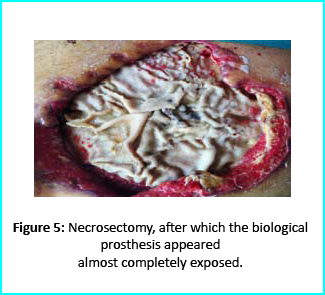
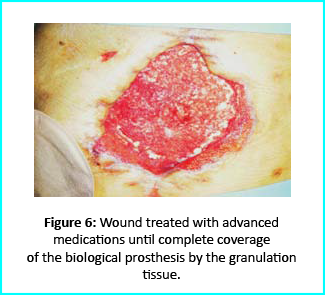
- Published in Corporate News / Blog
Global Stem Cells Group Enters Training Agreement with Moroccan Hospital
The agreement between Global and CHU Mohammed VI in Marrakech will help enhance staff preparation and clinical offerings in regenerative medicine
MIAMI LAKES, Florida— Stem Cells Training Inc., a subsidiary of the Global Stem Cells Group (GSCG), has announced that it has signed an onsite training agreement with Centre Hospitalo-Universitaire Mohammed VI Marrakech (CHU). GSCG faculty will travel to Marrakech, Morocco to provide this invaluable two-day training to CHU’s staff on February 14 and 15, 2020.
The agreement names the GSCG as CHU’s provider of training for the facility’s regenerative medicine staff. Through the deal, the GSCG will provide preparation and education in the latest regenerative medicine techniques and stem cells protocols, focusing on those utilizing adult stem cells and birth tissue derived from stem cells. In addition to on-site training, the agreement also names the GSCG as CHU’s provider for all necessary equipment to implement regenerative medicine treatments.
The additional training and supplies offered through the agreement will allow CHU to incorporate the industry’s most effective stem cells protocols into the hospital’s treatment options.
The Centre Hospitalo-Universitaire Mohammed VI is a regional leader in quality patient care, student education, physician training, and innovative medical research. Located in Marrakech, CHU provides the bustling city with short-, medium-, and long-range care solutions. Counted among its innovative institutional projects, CHU’s Culture and Health program is committed to making the hospital a more human environment for patients seeking care.
“The agreement between the Global Stem Cells Group and the Centre Hospitalo-Universitaire Mohammed VI Marrakech is an important one for both partners,” said Benito Novas, CEO of the Global Stem Cells Group. “As a university institution, CHU is interested in leading clinical trials to prove the safety and efficacy of regenerative medicine treatment protocols—something the GSCG has a vested interest in. This agreement will allow us to train hospital staff to offer cutting-edge treatments to patients in Morocco while helping stem cells treatments gain more traction globally, making them more viable options for physicians to incorporate into their practices.”
With the newly signed agreement, the GSCG continues to advance its mission to expand its presence across the global, especially focusing on North America and the Middle East. Physicians looking to grow their practices by offering regenerative medicine treatments can benefit from the GSCG’s trainings, which are conveniently held onsite at physicians’ home facilities, no matter where they are located globally.
To learn more about the onsite training opportunities offered by the Global Stem Cells Group, visit https://www.stemcelltraining.net/onsitetraining/. To learn more about the Centre Hospitalo-Universitaire Mohammed VI Marrakech, visit www.chumarrakech.ma.
- Published in Press Releases
Knee replacement alternatives
One of the amputating surgeries in the field of medicine is a knee replacement. It involves removing the knee joint and replacing it with a modified prosthesis. However, several modifications of this surgery have been introduced into the high-powered world of surgery, including several alternatives for knee replacement. In this article, we are going to review the several modifications and knee replacement alternatives therein.
What is Knee Replacement?
Knee replacement, also known as knee arthroplasty, is a surgical procedure that involves the amputation or cutting out of a knee joint, the bones reams by a doctor, especially due to accidents or joint ailments such as arthritis. When the bone is removed, it is then replaced with a prosthetic device. Knee replacement can be partial, where selected or affected parts of the joints can be removed, such as the medial, lateral, and anterior compartments can also be removed and replaced with a modified prosthetic.
Why Should You Be looking for a Knee Replacement Alternatives?
Due to the dynamics of the human body, what works for the goose may not necessarily work for the gander. Certain post-symptoms of a knee replacement can be unbearable for most patients.
Pain After Knee Replacement.
Due to pain in the knee joint, a lot of patients embark on this old-time surgery to help reduce the pain they feel around their knee. But it is worthy of knowing that a substantial number of these patients still continue to feel pain after this audacious surgery. In a survey done by the government, 40% of patients that underwent knee replacement experienced miniature pain for over 3-4 years, while another 44% still felt some 3-5/10 degree of pain in 3-4 years. So, it is not worthy of looking in the direction of knee replacement alternatives in order to solve knee pain.
Knee Replacement Risks.
There is a risk in everything that we do, business, taking a walk, climbing a hill. Same way, certain risks exist in knee replacement which are:
- Patients become more susceptible to heart attack and stroke immediately after knee replacement surgery.
- Increased levels of metals in the blood.
- Allergic reactions to the prosthetic material.
- Possibility of infection.
- Reduced activity of the patient as they thrive to become accustomed to the new prosthesis.
Even though social media and digital marketers paint a vivid picture of beautiful seniors riding a bike, continuing in their daily activities and hobbies, but this may not be true for everyone; in a study conducted by the government, there was seldom activity by patients after knee replacement surgery. Another study showed that patients who weren’t running before a knee replacement surgery couldn’t run after the surgery. But there are always two ways to everything; some other patients also showed an increase in physical activity after their surgery.
What are Knee Replacement Alternatives?
Steroid Injections
Steroids are made up of corticosteroids and cortisone. These corticosteroids carry out an anti-inflammatory function to prevent swelling around the knee regions as well as help reduce pain. But they do have a side effect; they destroy cartilage and may not be efficient as they are thought to be. If you are considering this knee replacement alternative, you probably should bear in mind that they do not offer long term remedies. Steroid injections are viable for knee replacement needs caused by arthritis but may proffer short-termed solutions.
Viscosupplementation
Viscosupplementation is also another knee replacement alternative. They are in the form of gels for the knee, also knowns as hyaluronic acid varying across different brands in the market, likes of SynVisc, OrthoVisc, Supartz, and Euflexxa. They are administered to the patient, but a quick question one would ask is if really the shots help. The variations of results all over the web show support both sides of the notion. But one peculiarity of these results is that none says that they are hurtful or damaging as the steroid injections rather that they give a better solution to knee joint arthritis patients. In my own experience, these injections are efficient only when administered a few times, after which they begin to diminish in effects. The first dose may offer relief for some time, but a dose a far-reaching as the sixth dose may not offer any remedial effect at all.
Knee Nerve Ablation
Knee Nerve ablation is another breakthrough in the surgical world. Knee Nerve Ablation involves the use of technology to carry out a process where the specialist probes the nerves around the joint and passes electrical energy that is used to ablate (destroy) them. The work of these nerves is to relay signals from that region of the knee to the brain. So this technique deadens these nerves, and as such, you don’t feel any pain till those nerves grow back. The research on this type of knee replacement alternative is only a handful. Hence, they cannot conclude on the long term results since most of the studies on this new breakthrough are in their early stages.
Orthobiologics
Orthobiologics incorporation around the knee regions helps to enhance the healing of the knew joint or reduce the consequent degradation of orthopedic tissues. Orthobiologics are also knee replacement alternatives and can be gotten from the patient as autologous or a donor as allogeneic. The two primary derivations of orthobiologics are the PRP and the BMC short for Bone Marrow Concentrate. Another derivation that is commonly used is derived from natal tissues as in amniotic or umbilical cord. Just as the nerve ablation, the research on this type of knee replacement is at its early stages.
Platelet Rich Plasma (PRP)
We mentioned PRP earlier while discussing orthobiologics. PRP’s stand for Platelet-rich plasma that can be gotten from the patient. They contain healing factors that allow them to foster cartilage repair as well as reduce inflammation and balance the chemical dynamics of the knee. A lot of studies support the efficiency of PRP as knee replacement alternatives but may not offer much help when the arthritis is severe.
PKA (Percutaneous Knee Arthroplasty)
PKA (Percutaneous Knee Arthroplasty) comes in handy for severe cases of arthritic pain. This procedure involves the injection of rich bone marrow concentrates gotten from the patient or from a donor into the lax ligaments or other affected areas such as damaged meniscus tissues and tendons. This procedure is intricate and uses an ultrasound and fluoroscopy guides as compared to other quick knee shot techniques. Research proves that this method works pretty well, even in extreme cases of knee arthritis. This procedure also produces a lasting effect for about 2-7 years before the need for repetition.
Here you go!! Knee replacement alternatives. You sure would want to consider some of the alternatives; likes of PKA, PRP, and Bone Marrow concentrates that proffers a long-lasting solution.
- Published in Corporate News / Blog
Stem Cells Center Set to Open Doors on Two Locations in New York State
A subsidiary of the Global Stem Cells Group, the new centers mark the group’s expansion across the US, delivering cutting-edge pain management solutions to patients
- Published in Press Releases
Global Stem Cells Group Receives 2019 Best of Miami Lakes Award
Miami Lakes Award Program Honors the Achievement
MIAMI LAKES November 14, 2019 — Global Stem Cells Group has been selected for the 2019 Best of Miami Lakes Award in the Biotechnology Company category by the Miami Lakes Award Program.
Each year, the Miami Lakes Award Program identifies companies that we believe have achieved exceptional marketing success in their local community and business category. These are local companies that enhance the positive image of small business through service to their customers and our community. These exceptional companies help make the Miami Lakes area a great place to live, work and play.
Various sources of information were gathered and analyzed to choose the winners in each category. The 2019 Miami Lakes Award Program focuses on quality, not quantity. Winners are determined based on the information gathered both internally by the Miami Lakes Award Program and data provided by third parties.
About Miami Lakes Award Program
The Miami Lakes Award Program is an annual awards program honoring the achievements and accomplishments of local businesses throughout the Miami Lakes area. Recognition is given to those companies that have shown the ability to use their best practices and implemented programs to generate competitive advantages and long-term value.
The Miami Lakes Award Program was established to recognize the best of local businesses in our community. Our organization works exclusively with local business owners, trade groups, professional associations and other business advertising and marketing groups. Our mission is to recognize the small business community’s contributions to the U.S. economy.
SOURCE: Miami Lakes Award Program
CONTACT:
Miami Lakes Award Program
Email: PublicRelations@2019localtop-selection.com
URL: http://www.2019localtop-selection.com
- Published in Press Releases
ISSCA Faculty Honored with Health Sciences Awards at Conference Held at the University of Miami
The awards recognize the physicians’ leadership in education and instruction in regenerative medicine
MIAMI LAKES, Florida—Three faculty members with the International Society for Stem Cell Application (ISSCA) were honored with awards at the organization’s recent regenerative medicine conference held at the University of Miami on October 24-27. The awards were sponsored by the Sociedad Internacional en Investigación, Salud, Desarrollo Empresarial y Tecnologías (SISSDET) and lauded the honorees for their commitment to leadership and education in the field of regenerative medicine.
The three recipients of the awards are Dr. Damian Ariel Siano, Dra. Maritza Novas, and Dra. Silvina Pastrana. All three have continued to partner with the ISSCA and have notable contributions to the field by offering courses in regenerative medicine, helping thousands of doctors around the world add stem cells therapies to their medical practices.
Dr. Damian Ariel Siano is an orthopedic physician from Argentina who has dedicated his professional life to treat sports injuries. He is one of the most renowned sports medicine specialists in South America. Dr. Siano currently works with one of the most famous soccer teams in Argentina, using cell therapies to help professional athletes avoid unnecessary surgery and recuperate quicker from injuries.
Dra. Maritza Novas currently serves as the Director of Research and Development for the Global Stem Cells Group. For the past 10 years, she has dedicated herself to educating doctors in the latest stem cells advancements and conducting stem cell research. Dra. Novas has visited all continents, sharing her knowledge as a stem cells practitioner and researcher.
Dra. Silvina Pastrana is one of the first doctors that helped form the ISSCA. She has become a visionary in the field and is noted for creating her own stem cells protocols and using complementary therapies to get better results in patient who utilize cell therapies. Dra. Pastrana combines both ozone and vitamin C therapies before employing stem cell protocols, obtaining excellent results in treating patients with arthritis.
“The ISSCA is committed to helping physicians who want to add regenerative medicine to their practices gain the education and tools to do that,” said Benito Novas, Vice President of Public Relations for ISSCA. “The three doctors recognized at our recent event at the University of Miami are prime examples of the high-quality instructors that physicians can anticipate working with when then attend one of our conferences. Congratulations to our faculty on receiving this prestigious award, and thank you to SISSDET for recognizing their accomplishments.”
ISSCA is a global leader in stem cells research, applications, and education, partnering with major global institutions and locations worldwide to host its independent medical congresses. To learn more about the ISSCA and its all of its past and upcoming events, visit http://www.issca.us
- Published in Press Releases

